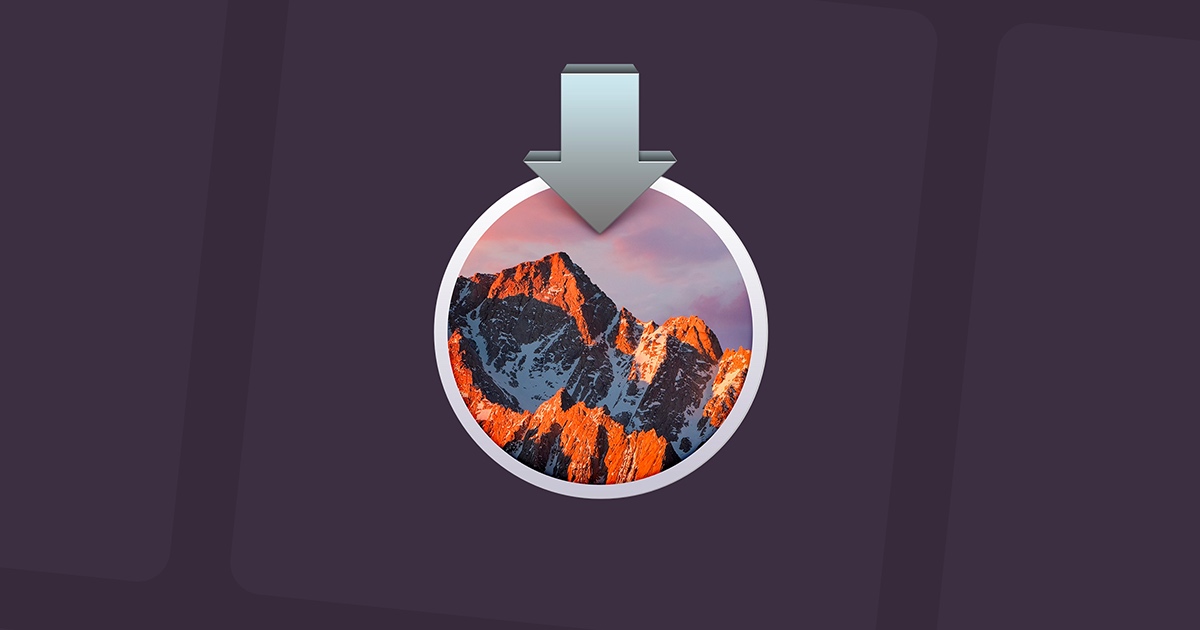
- REINSTALL MACOS SIERRA INSTALL
- REINSTALL MACOS SIERRA ARCHIVE
- REINSTALL MACOS SIERRA PRO
- REINSTALL MACOS SIERRA DOWNLOAD
REINSTALL MACOS SIERRA INSTALL
bash_profile (or equivalent) from an early VS Code version, remove it and replace it by executing the Shell Command: Install 'code' command in PATH command. Note: If you still have the old code alias in your. ' in any folder to start editing files in that folder.
Restart the terminal for the new $PATH value to take effect.  Open the Command Palette ( Cmd+Shift+P) and type 'shell command' to find the Shell Command: Install 'code' command in PATH command. You can also run VS Code from the terminal by typing 'code' after adding it to the path: Add VS Code to your Dock by right-clicking on the icon, located in the Dock, to bring up the context menu and choosing Options, Keep in Dock.
Open the Command Palette ( Cmd+Shift+P) and type 'shell command' to find the Shell Command: Install 'code' command in PATH command. You can also run VS Code from the terminal by typing 'code' after adding it to the path: Add VS Code to your Dock by right-clicking on the icon, located in the Dock, to bring up the context menu and choosing Options, Keep in Dock. 
Open VS Code from the Applications folder, by double clicking the icon.Drag Visual Studio Code.app to the Applications folder, making it available in the macOS Launchpad.Use double-click for some browsers or select the 'magnifying glass' icon with Safari.
REINSTALL MACOS SIERRA ARCHIVE
If archive, extract the archive contents. REINSTALL MACOS SIERRA DOWNLOAD
Open the browser's download list and locate the downloaded app or archive. Configure IntelliSense for cross-compilingĮdit Visual Studio Code on macOS Installation. How do you fix recovery partition issues? Share your tips below in the comments. Your new recovery partition has been created. Once the recovery partition is successfully completed, the script will end and a confirmation prompt will appear onscreen indicating its completion click OK to close out the script. The script will run as a background process thread, so feel free to continue to using it like you normally would during this time. Enter the location of the installer and click Choose.ĭepending on your computer’s specifications, the process could take awhile to complete. The script will request the location of the macOS Installer in order to extract the files necessary to create the partition. Click the button that corresponds to the version of macOS you’ll be creating the Recovery Partition on. After the disk check completes, the script will prompt you one last time. Afterwards, the script will ask to check the drive for errors click Continue to proceed or Skip Check to bypass this step. During its checks, the script will determine the filesystem being run on the drive. Prior to creating the partition, you’ll be prompted to selected the drive that the script will use to modify and create the recovery partition from. The script will prompt you to authorize the changes that will be made to your hard drive.  The script will execute and request to download any missing components from the internet click the OK button to allow this, if necessary. Launch the Recovery Partition Creator 4.x app by holding down the Control button and left-clicking the app, then selecting Open from the context menu (this bypasses GateKeeper and allows the app to run). Mac computer running macOS 10.7 (or later).
The script will execute and request to download any missing components from the internet click the OK button to allow this, if necessary. Launch the Recovery Partition Creator 4.x app by holding down the Control button and left-clicking the app, then selecting Open from the context menu (this bypasses GateKeeper and allows the app to run). Mac computer running macOS 10.7 (or later). REINSTALL MACOS SIERRA PRO
SEE: Resource and Data Recovery Policy (Tech Pro Research) Requirements There is an easy-to-execute solution that scripts the changes necessary to create the recovery partition within minutes. If you happen to fall into the latter category and somehow lost your recovery partition, there is a way to restore it without having to reinstall macOS. While the recovery partition is created automatically when installing or upgrading your Mac, there are times when it does not get created, and this can cause some difficulty when certain administrative functions are performed. ICloud Usage Policy (TechRepublic Premium) Save more than $1,000 off a refurbished MacBook Air Must-read Apple coverageĪpple debuts new and enhanced watches, iPhones, AirPods The macOS recovery partition is a simple way to troubleshoot or even reinstall a wonky macOS installation by accessing the operating system’s installation files stored on your Mac’s hidden partition.







 0 kommentar(er)
0 kommentar(er)
